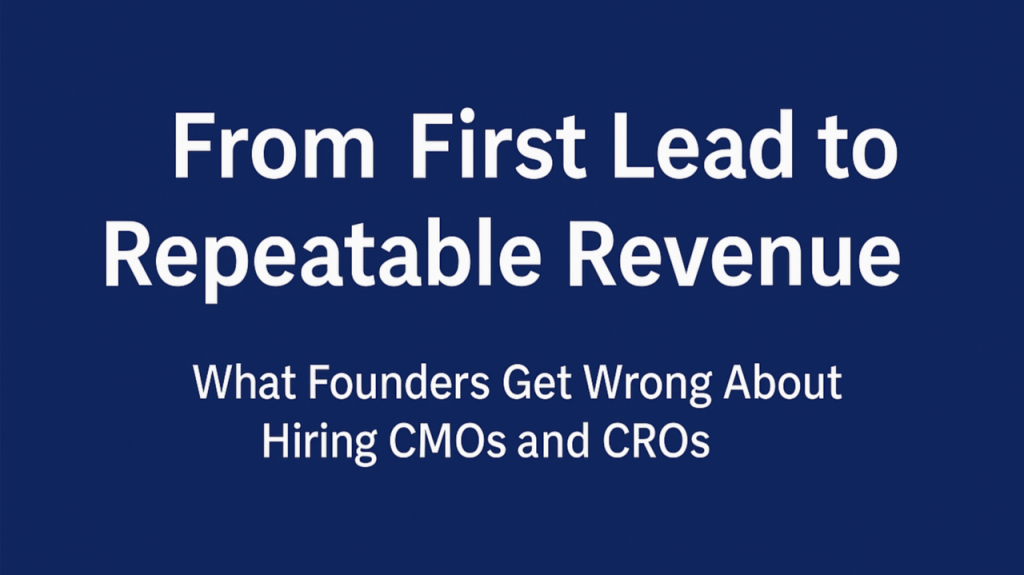From First Lead to Repeatable Revenue: What Founders Get Wrong About Hiring CMOs and CROs

Hiring a CMO or CRO too early can kill your runway. Hiring them too late can kill your momentum.
That was the core tension we explored in the pilot episode of From First Lead to Repeatable Revenue, a conversation between myself, Glenn Solomon and Michael Hughes. If you’re a startup founder wrestling with the right timing—and the right profile—for these critical hires, here are some highlights from our conversation you’ll want to take to heart.
✅ When to Hire a CMO
I argued that most startups shouldn’t bring on a full-time Chief Marketing Officer until around their Series B financing. Before that, the better path is a fractional marketing team that brings both execution and strategic consulting—focused not on brand building, but on establishing a repeatable, predictable revenue motion.
Too often, founders chase a “big name” marketing hire prematurely. Without product-market fit and proven pipeline dynamics, that’s a waste of capital. You need marketing muscle that can drive toward repeatability, not vanity metrics.
✅ When to Hire a CRO
Michael Hughes echoed this logic for sales leadership. You don’t need a CRO before you have a clear, validated sales process and product-market fit. What you do need are salespeople who can iterate, adapt, and learn directly from customers in those formative early years.
Hiring a CRO too early can burden your organization with the wrong expectations—and burn precious cash before you’re ready to scale.
🚧 What to Look For in Early Hires
Both Michael and I agreed: avoid execs who only thrive with big budgets and big teams. Early-stage companies need leaders who can roll up their sleeves, test, fail fast, and learn.
For marketing, that means a generalist with consulting chops who can operate across functions. For sales, it means someone curious and adaptable—not someone wedded to a rigid playbook from a previous role.
🔄 Sales and Marketing: Healthy Tension Required
We also explored the often-tricky relationship between sales and marketing. Healthy tension is necessary, but alignment is critical.
- Weekly lead reviews
- Service-level agreements (SLAs)
- Clear lead scoring
- Regular offsites to build trust and shared goals
These are the disciplines that turn alignment from theory into practice.
🔥 Lessons from the Sales Learning Curve
One framework we referenced was Mark Leslie’s Sales Learning Curve: early-stage selling is like manufacturing at low volume with high unit costs. Only once you’ve refined the process—your revenue engine—does it make sense to scale. Marketing and sales need to work hand-in-hand to accelerate this curve efficiently.
🎯 The Role of Marketing in Driving Revenue
Marketing shouldn’t just “support” revenue. It should own metrics that ladder up to revenue outcomes—even if those are micro-metrics early on. Once the business has a predictable engine, marketing’s revenue tie becomes direct and unavoidable.
🧑🤝🧑 SDR Ownership: Who Owns It?
We wrapped by tackling the age-old SDR debate: should Sales or Marketing own the team? Michael’s take: it depends on your challenges. Wherever SDRs live, alignment between your CMO and CRO is non-negotiable.
Want the full conversation?